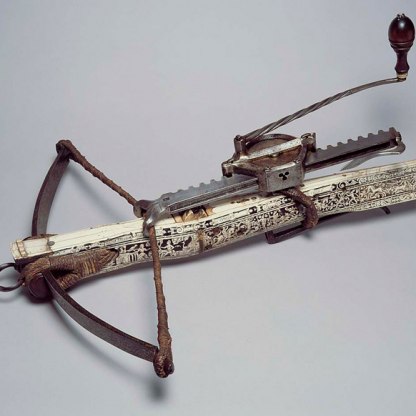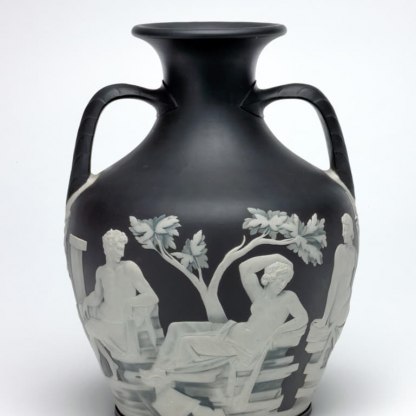The Crossbow in Battle
Crossbows have been found in Chinese graves dating from the fifth century BCE. The Greeks were known to have had a crossbow-like weapon called a gastrophetes – literally 'belly weapon'. And a Roman writer on military affairs, Vegetius, mentions them in a book written in 385 CE. But as an instrument of war the crossbow had its heyday in medieval Europe.
It was probably introduced to England after the Norman Conquest in 1066, and its armour-piercing qualities, relative cheapness and ease of use ensured a long, if morally dubious career. In 1139 a Church Council described crossbows as 'hateful to God', so terrible were the wounds caused by their bolts, and the weapon was officially declared to be 'unfit for Christians'. This did not mean, however, that it could not be used against Muslims, and Richard I of England made devastating use of this loophole during the Crusades. It was, perhaps fittingly, a crossbow bolt that killed him in 1199.
But by the mid-fourteenth century, English soldiers were carrying a different weapon into battle. At Crécy in northern France in 1346, the Genoese crossbowmen in the service of the French king were pitched against the longbowmen of Edward III's English army. The longbow had greater range and could discharge five or six arrows for every bolt that the heavy, unwieldy crossbow could fire. Edward won a famous victory.
But despite its disadvantages in open combat, the compact nature of the crossbow compared to the longbow ensured its survival until the introduction of firearms. It could be fired from a prone position and from cramped interiors and, as the illustration left from a medieval manuscript of Vegetius' Roman text shows, it was also useful on board warships [Ms.Marlay Add1.f86r].
Other highlight objects you might like
Other pathways and stories you might like
Sign up to our emails
Be the first to hear about our news, exhibitions, events and more…






